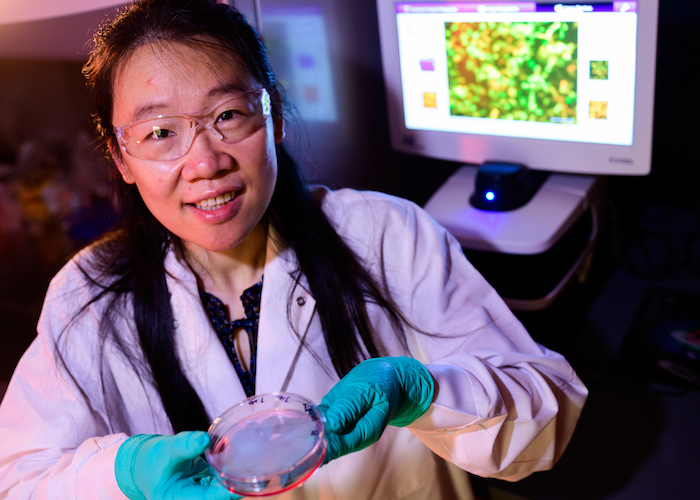Scientists at Rice University created a rapid COVID-19 test that is based on the gene editing CRISPR-Cas system. The researchers modified the Cas-13 protein to increase its activity and to light up with fluorescence when it encounters RNA from the virus. The system does not require the expensive lab equipment and technical expertise of PCR, the current gold standard COVID-19 testing technique. The researchers even hope to adapt it to create a paper strip test, similar to the ubiquitous antigen tests, allowing people in remote or low-resource regions to obtain accurate COVID-19 testing without the need for a fully equipped biolab.
The CRISPR-Cas system was discovered in bacteria, which use it to defend themselves against phages. The system has gained popularity as a gene editing technology. However, it also has potential as a diagnostic tool. For instance, these researchers have engineered Cas13 to detect tiny amounts of SARS-CoV-2 RNA.
The modified protein has been enhanced with a RNA guide that helps it to track down a specific RNA sequence from the virus. It has also undergone protein engineering to enhance its activity and imbue it with the ability to report its binding with the correct RNA sequence by emitting a fluorescent signal.

“The engineered Cas13 protein in this work can be readily adapted to other previously established platforms,” said Xue Sherry Gao, a researcher involved in the study. “The stability and robustness of engineered Cas13 variants make them more suitable for point-of-care diagnostics in low-resource setting areas when expensive PCR machines are not available.”
The ‘wild’ form of Cas13 found in bacteria does not have sufficient activity to be suitable for inclusion in such a diagnostic assay, so the researchers tweaked it by modifying a so-called hairpin loop near the protein’s active site to significantly enhance its activity.
“We could see the increased activity was five- or six-fold over wild-type Cas13,” said Jie Yang, another developer of the new test. “This number seems small, but it’s quite astonishing with a single step of protein engineering. But that was still not enough for detection, so we moved the whole assay from a fluorescence plate reader, which is quite large and not available in low-resource settings, to an electrochemical sensor, which has higher sensitivity and can be used for point- of care diagnostics.”
So far, the technology has demonstrated impressive sensitivity, and in a small study correctly identified 10 out of 11 positive nasal swab samples from COVID-19 patients and showed no false positives.
Study in Nature Chemical Biology: Engineered LwaCas13a with enhanced collateral activity for nucleic acid detection
Via: Rice University
